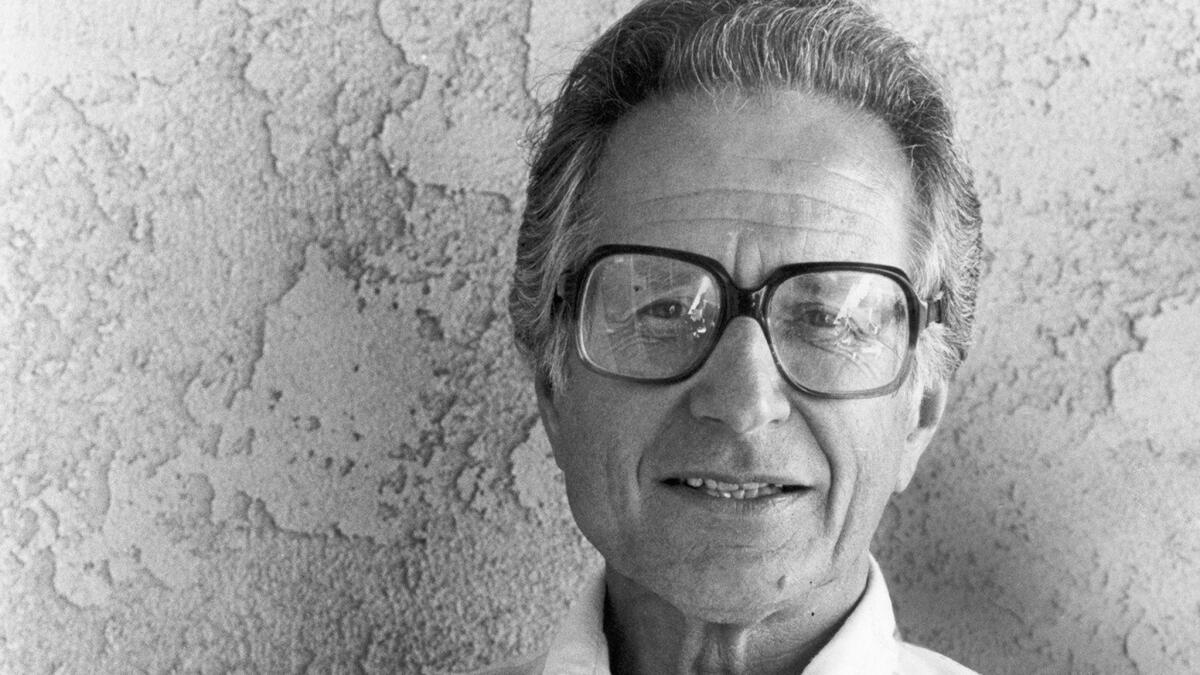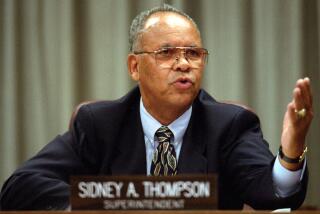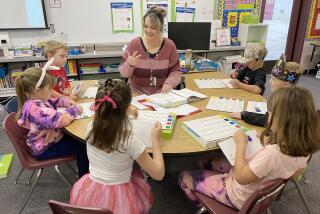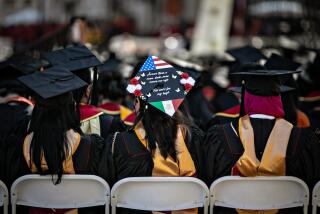John Goodlad dies at 94; led research on how schools fail to educate

John I. Goodlad, whose exhaustive analysis of the culture of schools and the reasons for their failures made him one of the intellectual leaders of the education reform movement that took off in the early 1980s, died Nov. 29 in Seattle. He was 94.
The former dean of UCLA’s Graduate School of Education, who later taught at the University of Washington, had cancer, said his son, Stephen.
Goodlad was the author of “A Place Called School” (1984), a classic eight-year study of 38 schools in 13 communities in which he described chronic problems that were pushing the nation’s schools “near collapse.”
Published shortly after “A Nation at Risk,” the 1983 report by a presidential commission that found American education beset by “a rising tide of mediocrity,” Goodlad’s book sounded many of the same alarms while also laying out an alternative vision of what schooling should be.
A progressive in the tradition of philosopher John Dewey, Goodlad described schools where accomplished teachers could lead their peers, where students are not grouped by age, and where the ability to discuss and assess ideas matter more than test scores.
“John always argued strenuously against test scores as a serious measure of whether we had good schooling,” said Roger Soder, an emeritus professor of education at the University of Washington and president of the Institute for Educational Inquiry, a nonprofit group Goodlad founded in1992 after retiring. “He said what we really needed to talk about was the relationship between schooling and what it takes to maintain a free society.”
One of the most comprehensive studies of its kind, “A Place Called School” drew its conclusions from the detailed observations of a team of researchers and more than 20,000 interviews with students, teachers, principals, parents and others.
It offered evidence of the adverse effects of common practices such as the “tracking” of students into high- and low-performance groups and grade divisions that ignore differences in students’ readiness to learn.
“John was always saying, ‘What is sixth grade anyway, and who made it up?’” recalled Jeannie Oakes, a nationally recognized expert on tracking and other inequities who was one of Goodlad’s researchers as a UCLA graduate student. “He invented the idea of the non-graded elementary school. He studied reading failure and what happens when kids don’t get promoted. He came up with the idea that kids ought to be given the opportunity to learn to read when they are developmentally ready.”
The book also closely examined the education of teachers and lamented the practice of rewarding the most capable teachers by taking them out of the classroom and putting them into administration.
“Teaching is perhaps the only ‘profession’ where the preparation recognized as most advanced [the doctorate] almost invariably removes the individual from the central role of teaching,” Goodlad wrote. He recommended instead a system in which teachers progress from teaching aide to doctorate-holding head teacher, with commensurate increases in pay.
In “Teachers for Our Nation’s Schools,” his 1990 report based on 1,600 hours of interviews at 29 colleges of education, he criticized education schools’ weak faculties and misplaced priorities.
“For the most part,” Goodlad wrote, “rewards for faculty members interested in teacher education are for studying teachers, not for preparing them.”
Many of Goodlad’s ideas were grounded in personal experience. Born on Aug. 19, 1920, he had a bucolic childhood in an isolated mountainside community near North Vancouver, Canada. Growing up during the Depression, he found teaching one of the few occupations available to him. In 1938, after one year of normal school, he obtained an elementary school teaching certificate.
His first job was in a one-room schoolhouse with 34 children spanning eight grades. An unhappy student named Ernie, who had been held back several times, made a deep impression on him, spurring his thinking about how grade levels based on age were, as he wrote later in “A Place Called School,” little more than “an adult convenience for classifying, tracking, assessing, advancing, and retarding the millions of students who move through it.”
He had more time to grapple with those issues in his next school, which was so crowded that he and the overflow of students from several grades were sent to a makeshift classroom in a church. The less-than-ideal conditions forced the young teacher to find ways to reach all the students without watering down instruction.
Recalling that he asked a custodian to build a sand table for his classroom, “I created a very progressive environment,” Goodlad said in Educational Leadership magazine in 1995. “With a great big sand table … I integrated history, geography, art, reading and other subjects as well as broke down all of the grade lines.”
By 1946 he had earned both bachelor’s and master’s degrees from the University of British Columbia. After receiving a doctorate in education from the University of Chicago in 1949, he began training teachers in the Atlanta Teacher Education Service and at Emory University and the University of Chicago.
In 1960 he moved to UCLA, where as director of the university’s lab school he blended students of different ages in the same classroom. He later served as dean of the education school for 16 years, molding it into one of the top teacher training schools in the country.
In 1985, he joined the faculty at the University of Washington, where he founded the Center for Educational Renewal to promote collaborations between schools and the universities where teachers are trained. He retired in 1991.
In the foreword for a 20th anniversary edition of “A Place Called School,” prominent education theorist Ted Sizer noted that Goodlad’s findings were “still sweepingly familiar. The breathtaking waste of time and treasure tolerated in many schools is no less with us today than when today’s middle schoolers’ mothers were 12th graders. There is a sad, almost eerie relevance to the detailed specifics of Goodlad’s critique.”
Goodlad acknowledged that not enough had changed in the nation’s schools. But he never lost his optimism that real reform—or renewal, as he preferred to call it--was possible. “He absolutely loved schools,” Oakes said of the scholar, who titled his 2005 memoir “Romances with Schools: A Life of Education.”
Besides his son, Goodlad is survived by a daughter, Paula, and five grandchildren.
Twitter: @ewooLATimes
More to Read
Start your day right
Sign up for Essential California for the L.A. Times biggest news, features and recommendations in your inbox six days a week.
You may occasionally receive promotional content from the Los Angeles Times.







